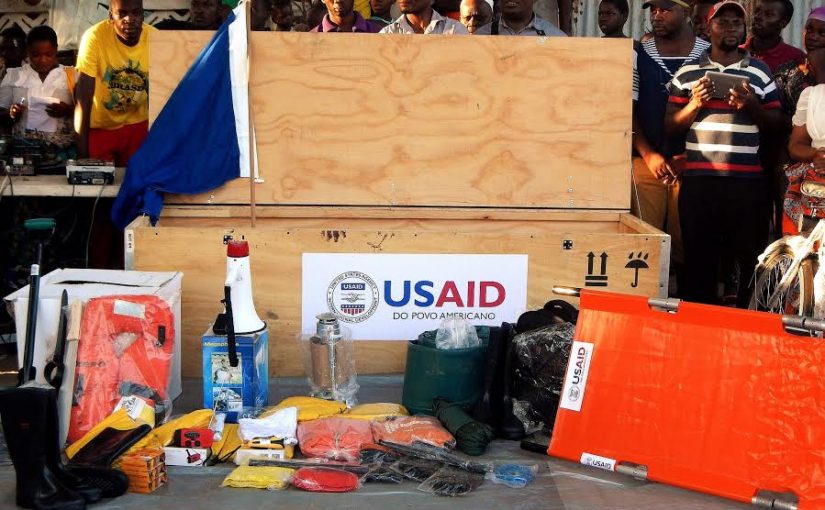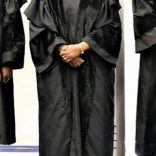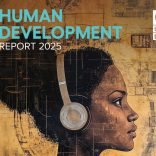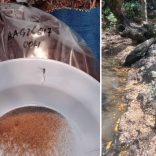Mozambique: Three judges dismissed for corruption - AIM report
USAID for Mozambican autonomy

Courtesy from USAID
“Use us in any form”, insisted Malvern Rusike, deputy Chief of Party at USAID’s Southern Africa Trade + Investment Hub (Satie Hub). He was speaking today in Maputo to an audience of Mozambican small and medium-sized entrepreneurs, farmers, industry associations, foundations and students. Encouraging them to solicit his organization in their quest to expand their businesses and/or access regional and global markets.
To that effect, Satie Hub set up an information session at the Southern Sun hotel regarding its newest initiative, the Strategic Partnership Fund. The investment vehicle provides matching funding support for initiatives that align with the Trade and Investment Hub’s goals. The fund actually constitutes the fourth pillar of Satie Hub’s African strategy to provide economic, development and humanitarian assistance.
The historic first three pillars are focused on intensifying agribusiness trade, exporting competitiveness and enabling environment and trade facilitation. More precisely, in the agribusiness area, the objective is to increase the competitiveness of targeted value chains by strengthening regional agricultural institutions and supporting trade and investment links.
“There is an approximately $120 billion market for African exotic or specialty food products in the United States alone”, specifies the USAID’s deputy Chief of Party. He also insists on the huge potential of Mozambican agriproducts that fit quite perfectly with the tastes and habits of the American consumers. Sesame, for example, is becoming an important export value chain in Mozambique.
Concerning competitiveness, the hub works to reduce logistical costs across borders. The do so by deploying modern trade facilitation tools such as trade information portals and national single windows in selected countries. “In Africa, there is a general sentiment that time is not a cost”, underscores Malvern Rusike. “However, it must be noted that one of the core objective of this pillar consists also in reducing time of doing business by raising awareness about the notion of time within a business context.”
The third pillar aims at improving regional trade, investment and integration, through the promotion of regulatory reform and harmonized standards. “The issue of standards, such as ISO, by the way, is critical for African entrepreneurs who want to have a minimal chance to bring their products to the international market and compete against global established businesses”, explains Malvern Ruskie. He adds that if Satie Hub may not always directly provide with the solutions to these challenges, it can at least do it indirectly through a working methodology based on partnerships with all relevant economic and social agents (public and private sectors, international agencies, government bodies etc.).
But today, the focus of the conference was the recent addition of the fourth pillar, which represents the financial and investment dimension that will amplify the impacts of USAID’s Satie Hub’s historical pillars. The Strategic Partnership Fund (SPF), as its name suggests, provides financial assistance, but the scope of its contribution goes far beyond.
The SPF will focus also on providing capital equipment upgrading, resulting in increased international competitiveness. It will also facilitate provision of processing and grading equipment to accelerate growth and trade. The fund will also mitigate risk and facilitate private sector technology transfer regionally as well as internationally.
Through an annual program statement (APS), the Southern African community is called for applications in order to have access to the various supporting tools of the SPF. As the Satie Hub describes it, the APS is “an invitation to the business community to work with the private sector, foundations, NGOs, associations and consulting firms, among others, to jointly identity and define problems, challenges and opportunities that can be effectively and collectively addressed”.
During the two-stage application process, applicants must first submit a “concept paper” for consideration. The concept paper details the applicant’s creative and innovative ideas that will make his or her business economically viable and sustainable, in the long term, and aligned with Satie Hub’s objectives. The APS is available for download on Satie Hub’s internet site and applications will be accepted from June through November 19, 2017. Short-listed applicants will then be invited to submit a full technical and cost application.
“Be creative”, advises Louise Hogan, SPF’s Manager, insisting on the extremely high competition among candidates for the obtainment of those grants. “Applicants must ask themselves three core or fundamental questions. Is there an objectively demonstrable market for my product, is my business sustainable beyond the mere assistance period and are my ideas in line with the general objectives of the Satie Hub?”
Louise Hogan also adds that projects that show superior gender equality and that can be exported will probably receive the highest consideration on the part of the SPF’s board. An important aspect of the SPF’s approach also lies in the necessity for applicants to contribute personally or through a third party in the partial financing of the projects. This can be achieved through matching funds that will complement the fund’s own contribution.
“We are reluctant to give any guidance on the level of those matching funds”, explains Louise Hogan. “However, we can say that a two-person company seeking 90% of the funds from the SPF, amounting to $80,000,00, for example, will have very few chances to be granted support. The same is true of a similar firm seeking to ask only 10% of the funding. Such requests do not sound realistic”, continues Louise Hogan.
One of the main pitfalls Satie Hub wants to avoid is ending up creating “donor babies”. These are people that have become dependent on external help. Today, during the presentation of the fund, Louise Hogan put great emphasis on the desired outcome of her institution’s intervention, namely enabling potential applicants to become economically autonomous and able to prosper well beyond the timeframe during which assistance is granted.
Matching funds are clear signals about a third-party’s trust in a project, thus increasing the chances of its success and, in turn, the SPF’s level of interest for such an initiative. Those funds do not necessarily need to be of financial nature. It can in the form of equipment or any type of productive in-kind contribution.
Finally, another valuable advice from Louise Hogan relates to the use of the proceeds of the funds applicants intend to make. Funds cannot be granted to pay the CEO of the company, for example. “Projects that minimize administrative costs and maximize costs directly related to the projects, such as those in relation with the acquisition of certification or new technologies, will have higher chances to receive support”, concludes the SPF’s manager.
By Levy-Sergio Mutemba












Leave a Reply
Be the First to Comment!
You must be logged in to post a comment.
You must be logged in to post a comment.